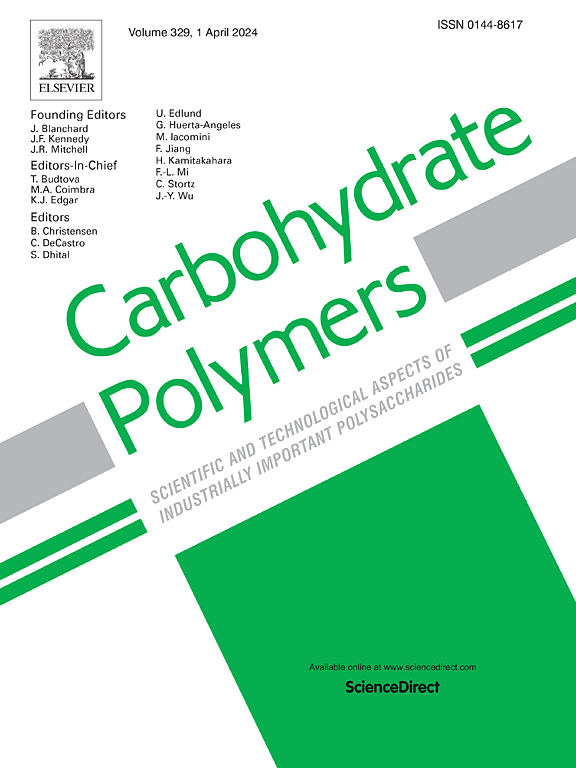工程稳健的生物基3D结构,从玉米秸秆髓通过可持续的途径到纳米-微观结构的极端环境抗性材料
IF 10.7
1区 化学
Q1 CHEMISTRY, APPLIED
引用次数: 0
摘要
具有优异回弹性的多孔三维(3D)结构在包括建筑和储能在内的各个领域引起了广泛关注。然而,目前的制造方法往往依赖于自下而上的方法,导致复杂的生产过程和环境问题。在这项工作中,我们通过细胞壁工程在温和条件下开发了生物基3D结构,该结构保留了生物质固有的细胞微观结构。玉米秸秆(CSP)是一种农业废弃物,经过稀释酸和无机盐溶剂的连续处理,即使在极端环境中应变为70%的情况下,也能产生具有优异压缩弹性的3D结构。压缩弹性的增强主要归因于刚性木质素含量的降低、固有的细胞微观结构和水凝胶细胞壁的增厚。通过盐溶剂引入的金属离子赋予材料离子导电性,使检测极限低至0.1 kPa。这些特性使生物传感器能够通过将压缩变形转化为可靠的信号来精确监测各种人类活动。这项工作提出了一种利用农业废弃物创造具有特殊结构稳定性的天然多孔和弹性材料的创新策略。这些材料在油水分离、柔性电子和隔热方面具有潜在的应用前景。本文章由计算机程序翻译,如有差异,请以英文原文为准。

Engineering robust bio-based 3D structures from corn stalk pith through a sustainable route to nano-micro structured extreme environment resistant materials
Porous three-dimensional (3D) structures with excellent resilience have attracted considerable attention across various fields, including construction and energy storage. However, current fabrication methods often rely on bottom-up approaches, leading to complex production processes and environmental concerns. In this work, we develop the bio-based 3D structures that preserves the intrinsic cellular microstructure of biomass via cell wall engineering under mild conditions. Corn stalk pith (CSP), an agricultural waste, is sequentially treated with dilute acid and an inorganic salt solvent, resulting in the 3D structures with excellent compressive resilience, even at a strain of 70 % in extreme environments. The enhanced compressive resilience is primarily attributed to the reduction of rigid lignin content, the intrinsic cellular microstructure, and the thickened hydrogel cell wall. Metal ions introduced through the salt solvent conferred ionic conductivity to the material, enabling a detection limit as low as 0.1 kPa. These properties allow the bio-based sensor to precisely monitor various human activities by translating compressive deformation into reliable signals. This work presents an innovative strategy for creating naturally porous and elastic materials with exceptional structural stability using agricultural wastes. These materials hold potential applications in oil-water separation, flexible electronics, and thermal insulation.
求助全文
通过发布文献求助,成功后即可免费获取论文全文。
去求助
来源期刊

Carbohydrate Polymers
化学-高分子科学
CiteScore
22.40
自引率
8.00%
发文量
1286
审稿时长
47 days
期刊介绍:
Carbohydrate Polymers stands as a prominent journal in the glycoscience field, dedicated to exploring and harnessing the potential of polysaccharides with applications spanning bioenergy, bioplastics, biomaterials, biorefining, chemistry, drug delivery, food, health, nanotechnology, packaging, paper, pharmaceuticals, medicine, oil recovery, textiles, tissue engineering, wood, and various aspects of glycoscience.
The journal emphasizes the central role of well-characterized carbohydrate polymers, highlighting their significance as the primary focus rather than a peripheral topic. Each paper must prominently feature at least one named carbohydrate polymer, evident in both citation and title, with a commitment to innovative research that advances scientific knowledge.
 求助内容:
求助内容: 应助结果提醒方式:
应助结果提醒方式:


